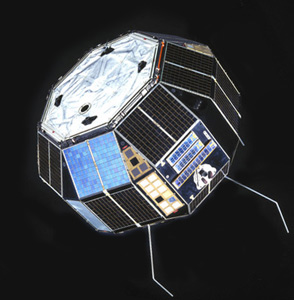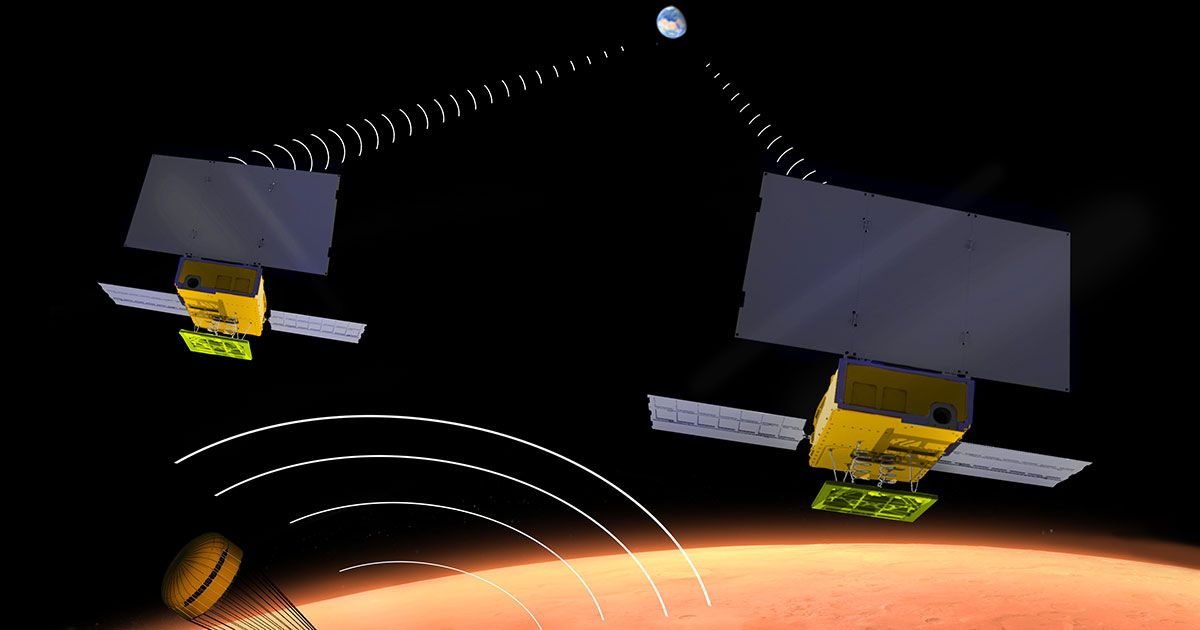There is a popular saying “Dream big but start small”. So, here it is, Low-Cost Small Satellites.
They are the new wave of innovation that drives excitement and it’s often being called the next generation of space exploration. These small spacecraft with their small size and mass allows expanded access to space.
Their innovative architectural design gives us a wide range of activities that can be implemented in space. But to do huge discoveries with the small satellites we have to match its potential both in resources that go in and their utilization.
Small satellites or the miniatured satellites as the name implies are low in mass and size (nearly under 500 Kg). Indeed, while mass is indeed a major factor, there are other key aspects to small satellites.
DO YOU KNOW WHAT THEY ARE? LET US KNOW..
- LESS MANPOWER
- COMPACT COMPONENTS FOR SUBDIVIDED SYSTEMS IN TERMS OF SIZE/MASS
-
- ELECTRICAL – power, attitude control, position determination
- PROPULSION – fuel tank, thrusters
- PAYLOAD – sensors, cameras
- THERMAL – heaters, radiators
- LAUNCHING SYSTEM – HUB
- COMMUNICATION – antennas, radio transmitters
- FEWER MISSION REQUIREMENTS
- DEPLOY ON LOW ORBITS
- LOW COST (manufacturing and deploying)
Small satellites are an effective cost savior and that is the main reason that they have gained such popularity including less time required to build, can be used in constellations to have wider coverage, and even used where traditional satellites cannot be used like for gathering multiple data, for low rate communications, etc.
“BIG THINGS COME IN SMALL PACKAGES” Small Satellites are the correct example for this.
Cost Estimation of Small Satellite
Small satellites include many subsystems like electrical, payload, thermal, propulsion, communication, etc. The cost estimation of the satellite is a total estimation that takes into account that includes these different subsystems. A cost estimation sheet is prepared for a satellite which includes expenses that are taken by each system.
Each subsystem is further subdivided to include various smaller systems such as electrical – power, attitude determination, and control system. The estimation sheet includes parameters, risking, purpose, any alternative. These different sheets are tallied with components available in the market or any other cheaper solution available. After following this procedure, a full cost estimation sheet is prepared.
Earlier versions of satellites
“The launch of short-lived miniature satellites which are traditionally launched in LEO is nothing new,”
said Martin Sweeting (chairman of SSTL-Surrey Satellite Technology Limited).
The history of smallsats is as old as space exploration. The first earth satellite launched was SPUTNIK 1 by the Soviet Union launched in 1957. The mass was around 83 Kg and had a radio transmitter along with batteries, a remote switch, and a fan. This satellite cost approximately 33 million USD.
DO YOU KNOW THE SIZE OF SPUTNIK WAS ALMOST THE SAME AS A BEACH BALL?

SPUTNIK 1 (Image Credit: Wikipedia)
Another US-based satellite EXPLORER 1 launched in 1958 weighing around 14 Kg was carrying cosmic detectors along with temperature sensors and a microphone costing less than 200 million USD. Despite quicker manufacture and development, these small satellites were quite expensive this return in terms of mission output, were minimal. So, to provide the mission with adequate output and improvements in terms of technology, structure, and stability in turn first raised the cost of satellite and then the mission.
Affordable options
“In the 1980s the US Defense Advanced Research Projects Agency started the Light sat initiative to reduce the cost and development time of the spacecraft in the 50-1000 Kg range” Sweeting added.
For making the small satellite affordable, satellite builders in the 1980s started using reprogrammable microcomputers that can reconfigure the capabilities remotely. This technique helped in many ways to make the cost low by making resources limited and affordable. Some of the other techniques are:
Power Limited
Amateur radio operators were the first to include these computers in their small satellites and hence microsatellites were initiated. They launched OSCAR 1 in December 1961 from Vandenberg Air Force Base, California, USA.
This radio amateur satellite had a mass of nearly 10 Kg and only had a simple battery with a radio transmitter which was transmitting the message “HI“ in the Morse code for 3 weeks until its onboard battery depleted. This cost around 3.5 million USD.
OSCAR 1 (Image Credit: Wikipedia)
Passive Attitude Stabilization And Fixed Program
Solar cells and rechargeable batteries were adopted to achieve usefulness in the orbit and provide simple basic attitude stabilization techniques with a fixed discrete program of logic circuits that enabled improved performance.
Britain successfully launched a small satellite called PROSPERO (66 Kg) using the BLACK ARROW launch vehicle in 1971. This satellite used spin stabilization and a tape recorder which lasted 2 years in space and produced about 730 recordings.

PROSPERO (Image Credit: AMSAT-UK)
Active Control
Advances in digital logic circuits enabled great capability with flexibility. The UK-based satellite MIRANDA launched in 1971 had a mass of 93 kg having fixed logical controlled circuits.
This satellite demonstrated a significant advance with a 3 axis gyro system and cold propane gas attitude control thrusters coupled with sun and earth sensors to achieve 3 axis stabilization and costing around 69.7 million much less than 100 million USD.
Early LEO Constellation
To achieve widespread or global coverage from LEO (Low Earth Orbit) construction of a satellite constellation is necessary. This will give advances in digital communication technologies to provide worldwide communication, focusing on services that are not provided by established GEO(Geostationary Earth Orbit) satellites.
The first LEO constellation was the Orbcomm constellation. Launched in 1991, 50 satellites were deployed in 5 orbital planes having 40-45 Kg mass each. These satellites were launched from the US Pegasus air-launch system into 750 Km 47 degree inclination orbits and these constellations tend to support M2M (machine-to-machine) messaging till 25-500 characters.
Also, microsatellites CubeSats, Nanosats, Femtosats, etc. were launched by making the mass and resources limited and results in less costing.
Low-Cost Small Satellite Missions
Mars Cube One (MARCO) Mission
“This mission was always about pushing the limits of miniaturized technology and seeing just how far it could take us”
Andy Klesh (mission chief engineer)
Insight stationary mars lander which included 2 CubeSats (one – 14.4 inches other – 9.5 inches) launched in May 2018 to provide additional information on communication from insight to Earth during its entry and landing.
They were launched with an insight lander but got separated after launch and travel in their trajectories to Mars and deployed 2 antennas and solar panels soon after separation.
This mission was independently navigated to Mars from InSight lander making its course adjustment. Since CubeSats were able to improve the communication data relay in real-time which in all reduce the cost of the mission to $18.5 million US.

2 CubeSats during the descent of insight (Image Credit: Wikipedia)
GFZ – 1 (GeoForschungsZentrum-1 Geodesy Satellite)
This mission was a German-based mission of GFS Potsdam consisting of a microsatellite to study various variations in the rotational characteristics of earth and measuring its changing gravitational field. This satellite was spherical is made up of brass and having a mass equal to 20.630 Kg. It was launched successfully on April 9, 1995, from Kazakhstan and got inserted in its orbit on 19th April. It turned out to be a successful mission with a reduced cost factor.

GFZ Satellite (Image Credit: directory.eoportal.org)
Capestone Mission
This is a planned lunar orbiter that will test and verify the measured orbital stability planned for the gateway space station. It will be a low-cost mission and decided to launch in 2021 deployed by electron-photon bus.
If things go as planned, it will be the first time that a spacecraft will be entering the rectilinear halo orbit around the moon. The spacecraft is 12-unit CubeSat and will also test the navigation system that will measure its position relative to NASA’s Lunar Reconnaissance Orbiter (LRO) without depending on ground stations.

CUBESAT CAPSTONE Mission (Image Credit: NASA)
CUBESATS – Going Further

CubeSat (Image Credit: Wikipedia)
CubeSats are a class of nanosatellites that use a standard size and form factor. The standard size of CubeSat is 1U (10 x 10 x 10 cm) and can be extended to 1.5,2,3,4, even 12U and has a mass less than 180 Kg.
This compact size allows these satellites to hitch a ride with other missions like being ejected from International Space Station, sometimes 6 at a time. They can be flown in swarms, capturing multiple measurements simultaneously with the help of identical instruments across a large area.
CAN WE DO MORE SCIENCE WITH CUBE SATS?
Not all sciences, Cubesats are too small to carry more instruments, but this innovative technology creates a platform for people to do science at a much lower investment to the taxpayer.
That’s true CubeSats have slashed down the cost of satellite development and lead to open doors for testing new instruments as well as to create a constellation of satellites working together.
Growth in Small Satellite Market
According to the global news sector, the small satellite market size is projected to grow from USD 2.8 billion in 2020 to USD 7.1 billion by 2025 at a compound annual growth rate of 20.5 %. The market is overflowing with various factors :
- Growing demand for LEO based services
- Demand for Earth observation imagery and analytics
- Increase in no. of space exploration missions
- Remote sensing application (major)
Not only the government now private companies can invest in small satellites as they are cheaper, faster to manufacture, and can be launched even for commercial purposes. The geospatial technology using Earth imagery satellites for agriculture, education, intelligence navigation, mapping, etc. has increased its commercial purposes.
“To talk about India, it is ready to launch 7000 small satellites and they are expected to be in the skies by 2027,”
said V K Saraswat (chief of DRDO) in his international space conference.
These small satellites are may be complex to make and adjusting in terms of objective and cost but soon there will be space exploration discoveries and undoubtedly quite a few of them will come from small satellites.
Suggested Reading: Why SpaceX launched four astronauts to the ISS?
Author
[…] Suggested Reading: Low Cost Small Satellite to explore our Solar System […]